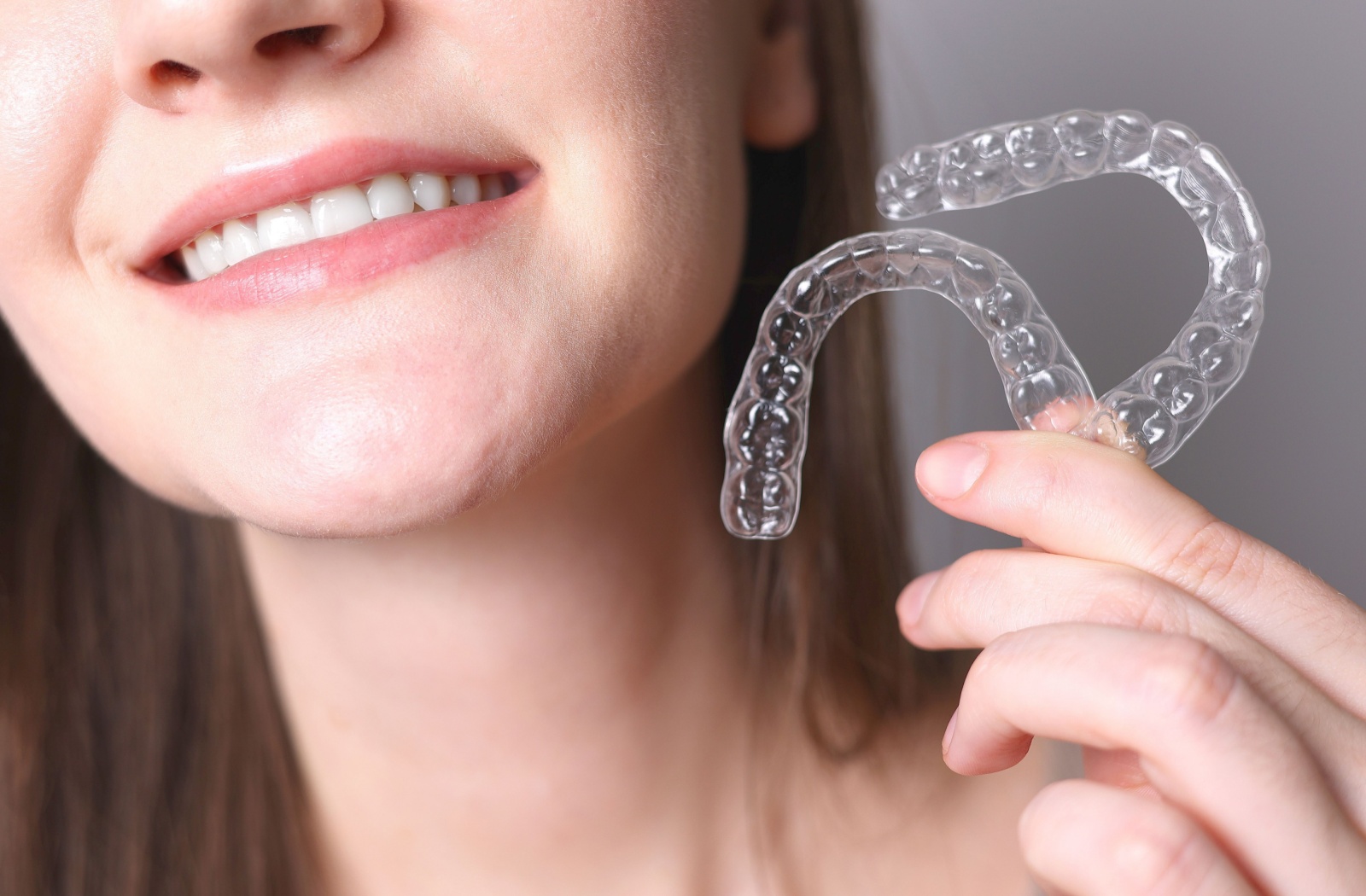Both Invisalign and braces are two common orthodontic treatments used to straighten and align teeth.
For mild to moderate misalignment, some may find that Invisalign is more convenient than braces because they are discreet and removable. However, it’s still important for your dentist to properly assess alignment issues and recommend the right treatment.
Understanding Invisalign & Braces
Clear aligners, like Invisalign and SureSmile, and braces can correct dental problems like misaligned teeth and bite issues.
Mechanics & Materials
Clear aligners and traditional braces work to straighten teeth, but they use different materials and mechanisms.
Braces consist of metal brackets glued to the teeth and connected by wires. These wires are periodically tightened to move the teeth into the desired position.
On the other hand, clear aligners use a series of clear, removable plastic aligners that fit snugly over the teeth. Each set of aligners gradually shifts the teeth until they reach their final, desired position.
Fitting Process & Treatment Duration
Getting fitted for braces involves attaching metal brackets to each tooth and threading a wire through them. This process can take time, but once they are in, you will need routine tightening and maintenance.
Clear aligners, however, begin with a digital scan of your teeth to create a series of custom aligners. You wear each set for the recommended time determined by your dentist, usually 7 to 10 days, before moving on to the next one.
Effectiveness & Suitability
Clear aligners like Invisalign and SureSmile can correct common orthodontic issues like:
- Overbite
- Underbite
- Crossbite
- Spaces and gaps
- Crowded teeth
- Open bite
Braces have been traditionally used for children, teenagers, and adults. Clear aligners, often favoured by adults due to their discreet appearance, are gaining popularity among other age groups as well.
The effectiveness of clear aligners, however, depends on lifestyle and commitment. For ideal results, clear aligners should be worn 22 hours a day. They should only be removed while you eat or while you brush your teeth and clean your aligners.
Comfort
Comfort is a significant consideration when choosing between clear aligners and braces.
Braces may cause discomfort, especially after adjustments, due to the metal brackets and wires. Clear aligners, made of smooth plastic, are generally more comfortable, though you can experience slight discomfort, usually temporary, as teeth shift.
Aesthetic Appeal

The clear aligners are virtually invisible, making them popular for individuals who prefer a discreet treatment. Although braces are available in tooth-coloured materials, they are still more noticeable. This visibility can make people feel self-conscious and affect social interactions, especially for teens and adults in professional settings.
Maintenance & Daily Use
Caring for braces involves regular and diligent brushing and flossing to avoid plaque buildup around the brackets and wires. Certain foods, like popcorn and sticky candies, are off-limits as they can damage the braces.
Clear aligners like Invisalign and SureSmile can be removed for eating and drinking anything other than water, making cleaning much easier. Clear aligners are more forgiving with dietary restrictions but require a strong commitment to consistent wear.
Commitment
Success with either treatment hinges on commitment and care.
Braces are fixed, which means constant wear, but there’s a risk of broken brackets or wires. You’ll also have to make sure the brackets are well-maintained by cleaning them properly. Of course, you’ll also have to maintain proper dental hygiene.
Because clear aligners aren’t fixed, you should wear them for at least 22 hours daily, so they can work to align your teeth. Inconsistent wear can prolong the treatment time, so discipline and commitment are essential for achieving results.
How to Get Started
Starting orthodontic treatments like SureSmile or Invisalign treatments involves an initial consultation with your dentist. During this stage, they will determine if you’re a good candidate for clear aligners, build a 3D model of your teeth, and create a treatment plan.
The next stage involves bonding small attachments to your teeth to help with teeth movement when wearing your clear aligners. Monthly check-in appointments will help monitor progress.
Achieve Your Desired Smile with SureSmile Clear Aligners
Clear aligners and braces both offer advantages. Choosing between them doesn’t have to be daunting. For mild to moderate misalignment, clear aligners can be an effective orthodontic treatment, offering the convenience and discretion some people might prefer.
Ultimately, the best way to determine the right option for you or your child is to consult your dentist. They can assess your needs and provide personalized recommendations based on your lifestyle, budget, and treatment goals.
Book an appointment with Hometown Dental to discuss if SureSmile clear aligners are right for you, and take the next step toward achieving your desired smile.





